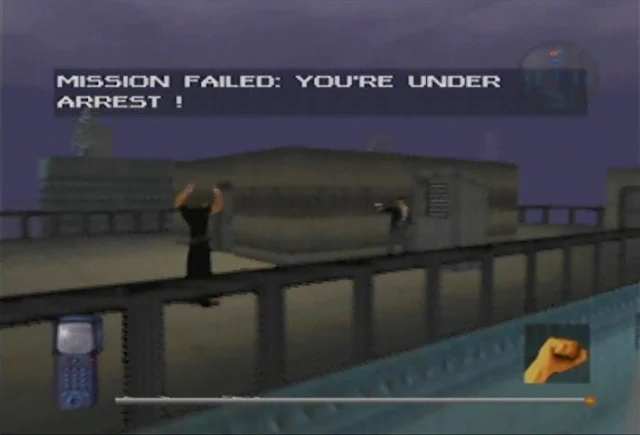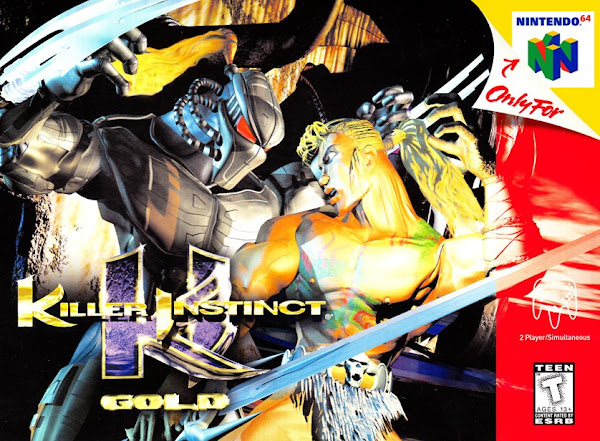Mission: Impossible

On July 18, 1998, Ocean Software, during its acquirement by Infogrames Entertainment, released its final game, the movie-licensed Mission: Impossible. Mission: Impossible features twenty film-inspired levels of third-person espionage and action, as Ethan Hunt tries to clear his name and retrieve a CIA NOC list.
It's like Tom Cruise is in the room with me.
The Personal Story:
In early fall of 1998, I had a serious problem. I had beaten all of Nintendo Power's posted record times for every level of Goldeneye 007. I had become so good at that particular game, I had taken to playing it on the most difficult setting...in a mirror. Even with everything reversed, those Russian guards were no match for me. I needed a new spy game challenge, and apparently, I was in luck. The long-developed Mission: Impossible had just been released. Touted by some as a Goldeneye killer, Mission: Impossible seemed to have all the right components in place, even though (as one can see in the above image) film star, Tom Cruise, refused to lend his face to the game based on the film in which he produced and starred. I became so desperate for a Goldeneye successor, I sold my aquarium for cash and purchased Mission: Impossible. Was it worth it?
SPOILER ALERT: I miss my fish.
Graphics: For the most part, Mission: Impossible is not a pretty game. Textures run the gamut from blurry to bland. Characters and objects are blocky. Outdoor levels all take place in a foggy blue mess. There are few graphical effects on display--the absence of real-time lighting is especially jarring. Explosions are mediocre. These are first generation graphics on a second generation game. However, praise can be offered for the CIA break-in level, which does a solid job recreating the imagery of the breathless film scene it's taken from. One earlier level, featuring yellow-tinted tunnels, is also nice to look at. Character animation is pretty good (though there is often a delay between an enemy getting hit by a bullet, and an enemy reacting to the bullet), usually natural.
The game's money shot...but it won't swim to the glass when you get home from work.
Sound: Ocean Software have composed great movie-licensed original video game soundtracks before (Jurassic Park for the SNES). Mission Impossible's soundtrack (the last Ocean ever composed), while not a bad piece of work, is not one of the studio's better efforts. The game contains less than ten original compositions, and few are memorable. The Mission: Impossible franchise's classic original theme song does pop up from time to time, and each appearance is welcome. Mission: Impossible does feature full voice-acting...in cutscenes only. In game action, if a guard spots the player, a "Hey, Stop!" text bubble pops on screen. This is frustratingly awkward. Thankfully, if someone spots the player from a distance and begins to shoot, the gunshots can be heard...but it may have been better if they couldn't. The guns in Mission: Impossible sound like a gas stove being fired--not guns. Helicopters and game gadget clicks and bleeps sound, at best, like what they are supposed to. Pained groans sound like pained groans. Young Ethan Hunt, upon doing something cool, will say the phrase, "Rock steady!" in the voice of an elderly man. While this makes little sense, it is hilarious.
I sold my finned friends, and life isn't worth living anymore. Save yourself, Tom Cruise.
Finally, two of Mission: Impossible's levels allow the player to switch between multiple characters at any point. Switching from Ethan on the ground, to a sniper covering him from a tower is thrilling. Why couldn't the developers pull off the kind of fluidity found in these two stages, along with the embassy and CIA break-in, in the game's other sixteen levels? The thought is maddening.
Also, I got a new aquarium. It is rad.
5.5
Graphics
A couple of standout levels, some bland hallways, and a lot of foggy mess.
6.5
Music and Sound
Full recorded speech in the cut-scenes only, and the sound effects are lacking. Decent, if repetitive score.
5.5
Gameplay
Four well-designed levels surrounded by mediocrity. Mission: Impossible simply is not fun.
4.5
Lasting Value
No multiplayer, and few will want to play through the ten hour single-player mode more than once.
5.7 FINAL SCORE







Comments
Post a Comment